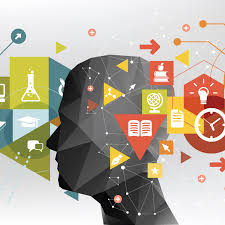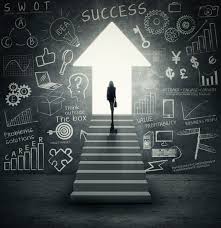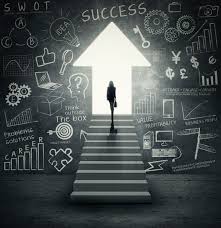
Several months ago, while attending a coaching training with Whitney Johnson, we discussed the role that entitlement plays in inhibiting growth. When it was suggested that all clients must battle entitlement, I resisted.
As I thought about it, I realized I was stuck on the word entitlement. It triggered me. It called to mind being spoiled, demanding, and deserving; qualities that I had a hard time believing pertained to EVERYONE. So, I sat with the dissonance and dug deeper. I asked myself, what causes entitlement? What creates this human experience? With reflection, I came to see entitlement as the result of not being able to work through disappointment when expectations differ from reality. Getting stuck in disappointment chokes our adaptive capacity and leaves us prey to entitlement.
We all experience grave disappointments throughout life. Perhaps it is a promotion we didn’t get, a contract falling through, a relationship ending, a loved one facing disease, or a raging pandemic. When life deals us disappointing experiences, it is easy to feel that ‘this is not how it was supposed to be.’ The challenge then rests in moving beyond these feelings.
A dear friend of mine faced personal tragedy when his four-year old daughter broke her neck in an accident, leaving her a quadriplegic. When his wife lamented over ‘what might have been’ had the accident not occurred, he reminded her that they had to stay in full acceptance of their new reality. Looking back at what might have been would only hurt them. So, for the last twenty years together with their daughter, this family has created a beautiful life filled with strength, courage, and resilience.
My colleague and contributor to this article, Dr. Annette Watkins, offers Richard Holling’s research as a lens for adaptation. Holling, an ecologist referred to as the “Father of Resilience Thinking,” studied natural systems – forests, fisheries, lakes, and swamps – to determine their capacity for resilience and adaptation when crises such as a fire and overwhelming pollution occurred. When comparing nature to human created systems, he found that nature is more capable of exploiting a challenging event and transforming it to an opportunity for growth, reorganization and sustainability because of its inherent diversity and variability. Sustainability is not achieved by stability but by adaptability in the face of challenge. He pointed to Darwin’s observation that ‘it is not the strong or smartest that survive. It is simply those animals most responsive to change.’
Rolling’s research illuminates adaptive human behavior.
At the heart of adaptation is acceptance and a focus on what can be controlled within a situation. Once we identify what is within our control, we can determine how to use the opportunity to grow and evolve by diversifying our thinking and tapping into different resources. The process runs parallel to innovation, and it is no accident that innovation has been a cornerstone for many individuals and organizations during 2020.
It has been a privilege to watch many of you innovate and adapt this year. We’ve personally been privy to you:
-
Repositioning your enterprises
-
Launching new careers
-
Leading virtual teams
-
Producing gala events on-line, and
-
Collaborating across countries and industries to stay afloat.
Yes, there has been grave disappointment in 2020, AND people have adapted brilliantly. When people and organizations accept, align, and adapt, they transition from disappointment to possibility. It appears the formula for battling entitlement and driving innovation are one in the same.
As 2020 rolls into 2021, we must continue to process disappointment and the way we thought things should have been. This time in history requires us to:
Accept the new reality fraught with limitations and ripe with opportunities while releasing expectations of what ‘should’ have been
Align our core values and missions to the opportunities in this new reality
Adapt to new processes for moving forward one step at a time.
Carolyn Myss, an intellectual and spiritual leader, brought Samuel D. Kassow’s book, Who Will Write Our History, to my attention. The book tells of Emanual Ringelblum, a Jewish historian who collected the stories of Polish Jews both before and during the Warsaw ghetto. Once in the ghetto, Ringelblum noticed that those who held onto who they were and the lives they led before the war, were the least likely to survive. Clinging to professional titles, past privileges and status kept them from adapting to the new reality. Survival did not correlate with their physical strength and might, but instead on their ability to accept and adapt. Myss states in her summary of the book, “personal history and how one imagines how their life should be, in other words, becomes a burden in times of crisis.”
2020 has forced us to develop skills for adaptability and innovation. It has demanded we battle entitlement. And we will be better for it.
 Last week I took an adult ballet class.
Last week I took an adult ballet class.
 Case Western Reserve University professor, Richard Boyatzis’ Intentional Change Theory documents how a strong vision of one’s ideal self in a particular situation helps to support sustainable behavior changes that positively impact performance. And I have found in my work that a significant factor in this ideal self-vision is an appropriate and intentional mindset.
Case Western Reserve University professor, Richard Boyatzis’ Intentional Change Theory documents how a strong vision of one’s ideal self in a particular situation helps to support sustainable behavior changes that positively impact performance. And I have found in my work that a significant factor in this ideal self-vision is an appropriate and intentional mindset. Decide what you can and cannot control. Many behavior scientists and psychologists agree that identifying what is within your control creates a sense of self-efficacy. This process allows you to channel nervous energy in a positive direction. What actions can you take today to improve your situation?
Decide what you can and cannot control. Many behavior scientists and psychologists agree that identifying what is within your control creates a sense of self-efficacy. This process allows you to channel nervous energy in a positive direction. What actions can you take today to improve your situation? Engage in the power of giving. Last Sunday a customer at the Coaches Bar and Grill in Ohio left a $2500 tip on his $30 tab, a sizable gift to help the workers who had just learned that their restaurant was closing due to the Coronavirus pandemic. Nothing creates a sense of wellbeing during turbulent times like giving. Harvard Business School professor, Lara Aknin and her team of colleagues researched the impact that giving has on people across the globe. They found that the positive psychological effect of helping others in need is universal, and in terms of happiness and satisfaction, the act of giving can create an effect of doubling one’s income.
Engage in the power of giving. Last Sunday a customer at the Coaches Bar and Grill in Ohio left a $2500 tip on his $30 tab, a sizable gift to help the workers who had just learned that their restaurant was closing due to the Coronavirus pandemic. Nothing creates a sense of wellbeing during turbulent times like giving. Harvard Business School professor, Lara Aknin and her team of colleagues researched the impact that giving has on people across the globe. They found that the positive psychological effect of helping others in need is universal, and in terms of happiness and satisfaction, the act of giving can create an effect of doubling one’s income. What do you do when you find yourself at a crossroad? When your current life no longer ‘fits’, yet your next steps are unclear? When you’re ready for a new chapter to begin, but you don’t know how to initiate change?
What do you do when you find yourself at a crossroad? When your current life no longer ‘fits’, yet your next steps are unclear? When you’re ready for a new chapter to begin, but you don’t know how to initiate change?